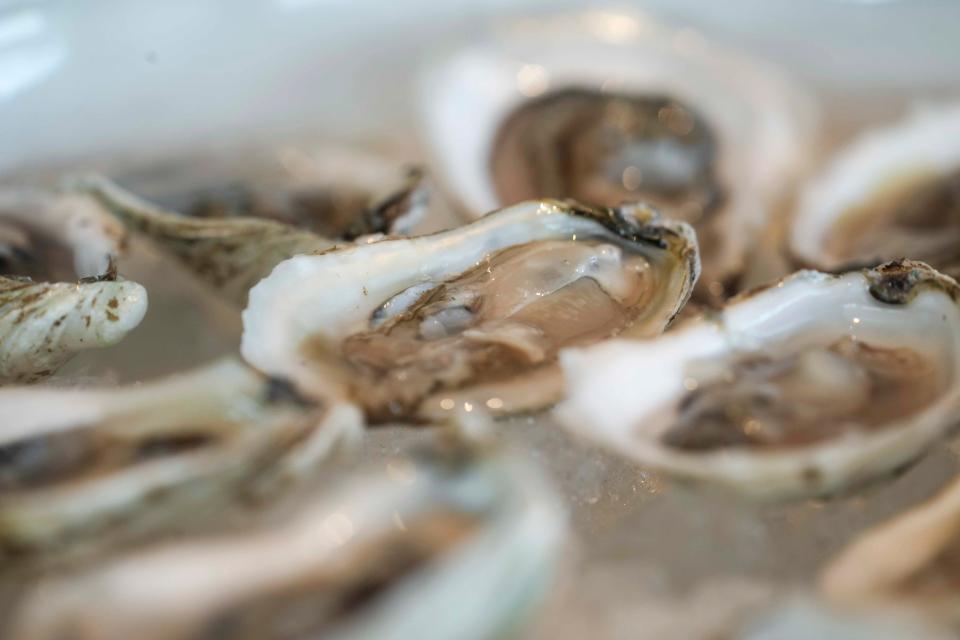What Palm Beach County residents should know about "flesh-eating" bacteria that killed 5
A dangerous bacteria responsible for the deaths of five people on Florida’s west coast this year has been less lethal in Palm Beach County and the Treasure Coast where the Atlantic Ocean may temper its virility.
No cases of Vibrio vulnificus infections have been reported in Palm Beach, Martin, St. Lucie or Indian River counties this year, according to the Florida Department of Health. In the past 15 years, six people in Palm Beach County infected by the bacteria have died, with one in Martin County and two in both St. Lucie and Indian River counties.
The bacteria, misnomered as a “flesh-eating bacteria”, is mostly a concern for people with a liver disease, kidney disease or a compromised immune system who come into contact with it by eating raw shellfish or swimming with an open cut.

Vibrio vulnificus is not really a flesh-eating bacteria
Vibrio vulnificus does kill human tissues, and rapidly, but doesn’t consume them. Skin infections from Vibrio move faster than a traditional infection, racing as quickly as an eighth of an inch per hour, said Paul Gulig, a professor of molecular genetics and microbiology at the University of Florida.
Gulig, who teaches a class to UF medical students on Vibrio infections, said the bacteria thrive in brackish waters, and don't survive in pure seawater.
He said counties with the highest cases of Vibrio infection and deaths are on the west coast and the Panhandle where there are large bodies of water where salt and freshwater mix such as Tampa Bay, Charlotte Harbor and Pensacola Bay.
In Palm Beach County, the Intracoastal Waterway would be the largest body of brackish water. The Treasure Coast has the Indian River Lagoon and the St. Lucie River.
There's no reason to 'sound the alarm' but remain cautious about potential infections
“People do die and get Vibrio from those areas but the thing with Tampa is there are large estuaries and huge numbers of people going in the water,” said Gulig. “In my opinion, despite the fact that five people died, that’s not any reason to start sounding alarms other than reminding people maybe they shouldn’t go into the water with a cut.”
What cat is that? Mysterious feline captured on camera roaming near Wellington
The deaths this year were of people in Hillsborough, Pasco, Polk and Sarasota counties.

Kleper de Almeida, an infectious disease specialist at Good Samaritan Medical Center in West Palm Beach, agreed this year’s deaths from Vibrio are a good reminder for people to take caution if going in brackish waters and to avoid raw shellfish.
He said there is no cause for panic, as it is still a generally rare infection.
Beach critters to watch out for: Toxic man-of-war clustering on beaches with easterly winds...why they often come in winter
“I have been here for 18 years and I have never treated someone with Vibrio,” de Almeida said. “For most people, it’s not a big deal but for folks who have chronic liver problems or whose immune systems are suppressed, it can be a problem.”
Vibrio vulinificus is a natural bacteria in the environment. It feeds on chitin, which forms the exoskeletons of crustaceans and shells of filter feeders like clams and oysters.
If the bacteria is consumed by a human eating raw shellfish, it can get into the intestine and potentially the bloodstream where it can cause sepsis, said William Schaffner, professor of preventative medicine at Vanderbilt University Medical Center.
Schaffner said it’s hard to see patterns in the small numbers of infections being reported. He did note that Vibrio infections were once confined mostly to the Gulf Coast but have been creeping up the Eastern Seaboard possibly because of warming ocean temperatures.
Gulig also said that the “real story” is that three people were infected this summer in Connecticut.
“That’s the crazy thing because Vibrio infections have almost exclusively been from Texas around the Gulf and up the Atlantic, maybe into South Carolina and North Carolina,” Gulig said.
In Connecticut, three people, ages 60 to 80, were hospitalized with Vibrio infections. One died. One person said they had eaten raw oysters from an out-of-state restaurant. Two said they were swimming in Long Island Sound with open cuts.
It’s unclear how the people in Florida got infected and the state’s department of health did not return emails or phone messages with questions about the source of the infections.
It can kill you in a couple of days
Vibrio vulnificus prefer water temperatures between 65 and 95 degrees
“There has been much discussion that there may be a change in the ecology with the slight warming of the ocean,” Schaffner said. “It could be in very subtle ways that the average person doesn’t notice but bacteria might.”
The infection is curable if treated quickly, but people have to recognize the signs. If a skin infection develops and advances rapidly, it could be Vibrio. If the bacteria is ingested, it can cause watery diarrhea, nausea, vomiting, fever, and chills.
Gulig said one of the case studies he teaches his students is a doctor from New York who got infected during a trip to the Panhandle. He thought he could treat it himself, but the infection spread so fast he needed to have his arm amputated.
"It can kill you within a couple of days," Gulig said. "You can treat it with antibiotics, but once it gets out of hand, you get to the point of having to do something more severe."
Kimberly Miller is a veteran journalist for The Palm Beach Post, part of the USA Today Network of Florida. She covers real estate and how growth affects South Florida's environment. Subscribe to The Dirt for a weekly real estate roundup. If you have news tips, please send them to kmiller@pbpost.com. Help support our local journalism, subscribe today.
This article originally appeared on Palm Beach Post: Flesh-eating bacteria in Palm Beach County and what you need to know

